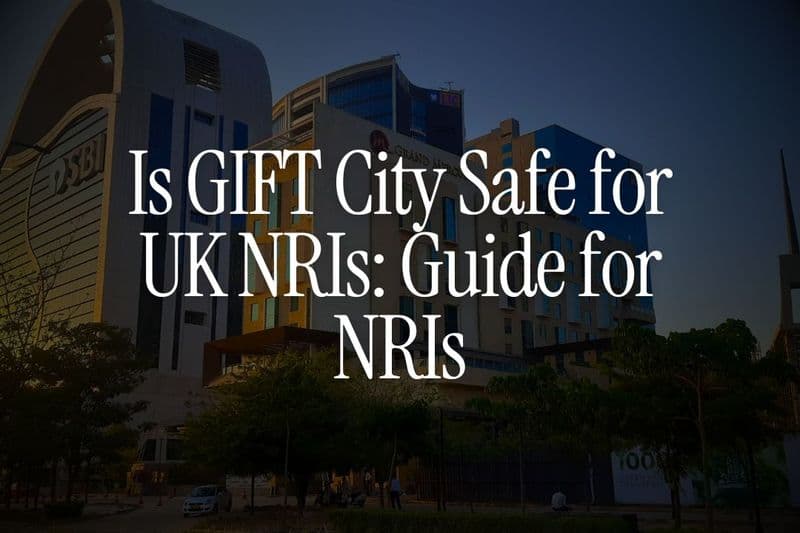
You've got ₹15 lakhs sitting in your NRE savings account, earning a measly 2.5% interest while you watch the rupee weaken against the dollar. Sound familiar?
This exact dilemma landed in our Belong WhatsApp community last week when Priya, a software engineer in Dubai, asked whether she should move her emergency funds to a fixed deposit for better returns. It's the classic NRI conundrum: liquidity versus returns.
As someone who's helped thousands of NRIs optimize their idle funds over the past 12 years, I'll walk you through exactly when savings accounts make sense, when FDs are worth the lock-in, and the often-overlooked third option that could change everything.
Let's cut through the marketing fluff and look at what banks actually pay NRIs right now.
NRE Savings Account Interest Rates (November 2025)
Most major banks offer 2.50% p.a. on NRE savings accounts, with some notable exceptions:
Major Banks:
- SBI: 2.50% p.a.
- ICICI Bank: 2.50% p.a.
- Axis Bank: 2.50% p.a.
- Kotak Mahindra: 2.50% p.a.
Also Read -Best NRE Savings Accounts
Small Finance Banks (Higher Rates):
- Ujjivan SFB: Up to 7.25% p.a.
2.75% (up to ₹1L), 3.5% (₹1-5L), 6% (₹5-10L), 7% (₹10-50L), and 7.25% (above ₹50L) - IDFC FIRST: Up to 7.00% p.a.
3% (up to ₹5L), 7% (₹5L–₹10Cr), 6% (₹10–25Cr), 5% (₹25–100Cr), and 4% (above ₹100Cr).
NRE Fixed Deposit Interest Rates (November 2025)
NRE FD rates range from 6.5-7.5% p.a. for tenures of 1-10 years. Here's what major banks offer:
For deposits under ₹2 crores:
- SBI: 6.25% - 6.60% p.a.
- ICICI Bank: 6.50% - 7.30% p.a.
- Axis Bank: 6.50% - 7.00% p.a.
- Yes Bank: 6.60% - 6.8%
- IndusInd Bank: 6.50% - 6.75%
The Reality Check: Even the lowest FD rates beat the highest savings account rates from major banks (2.5%) by more than double. But here's the catch: NRE FDs cannot be withdrawn before 1 year without losing all interest.
Also Read - Which bank is best for fixed deposit in india
The Liquidity Trade-Off: Access When You Need It
Here's where most NRIs make expensive mistakes. They either keep everything liquid "just in case" or lock it all away chasing higher returns.
Savings Account Liquidity Benefits
Instant Access:
- 24/7 ATM withdrawals globally
- Real-time NEFT/RTGS transfers
- UPI payments (some banks now support international SIMs)
- No penalties or waiting periods
Emergency Flexibility: Your Dubai landlord wants 3 months' rent upfront? Your Mumbai property needs urgent repairs? With savings accounts, you're covered immediately.
Fixed Deposit Restrictions
Fixed deposits are not liquid and cannot be easily converted to cash without incurring penalties. Here are the harsh realities:
For NRE FDs:
- No interest paid if withdrawn before 1 year from deposit date
- After 1 year: Interest paid for completed period minus penalty (typically 0.5-1%)
- Processing time: 2-7 working days for premature closure
For NRO FDs:
- Minimum tenure: 7 days for NRO vs 1 year for NRE
- Earlier access but with penalty charges
👉 Tip: Most banks offer loan facilities against NRE FDs up to 90% of deposit value. This gives you liquidity without breaking the FD, though at a cost (typically FD rate + 1-2% interest on loan).
Tax Treatment: Both Get the Same Benefits
Good news: Interest earned on NRE accounts is tax-free in India regardless of whether it's savings or fixed deposits.
What This Means:
- No TDS deductions
- No need to file ITR just for these accounts
- Full repatriation of principal and interest
But Consider Your Home Country:
- UAE residents: No personal income tax concerns
- US/UK residents: May need to declare in local tax returns
- Germany/Canada residents: Check DTAA benefits
Use our Residential Status Calculator to understand your exact tax obligations across countries.
Minimum Balance Requirements and Hidden Costs
Banks love to advertise attractive interest rates but bury the real costs in fine print.
Savings Account Costs
Monthly Average Balance (MAB) Requirements:
- SBI: ₹1,00,000 for NRE Premium accounts
- ICICI Bank: ₹25,000 - ₹1,00,000 depending on account type
- Axis Bank: ₹25,000 - ₹2,00,000 for different variants
Penalty Charges: Most banks charge ₹500-₹750 monthly for MAB shortfalls. That's ₹9,000 annually-enough to wipe out interest earnings on smaller balances.
Fixed Deposit Minimums
Most banks require ₹25,000 minimum for NRE FDs. No ongoing balance maintenance, but watch for:
- Processing fees: ₹500-₹1,000 for early closure
- Repatriation charges: 0.1-0.5% of amount transferred abroad
- Currency conversion spreads: 0.5-2% when converting to foreign currency
👉 Tip: For amounts under ₹5 lakhs, factor in these charges before choosing FDs. The math might favor high-interest savings accounts from smaller banks.
Safety and Insurance: Your Money's Protection
Both savings accounts and FDs enjoy the same safety net under Indian regulations.
DICGC Insurance Coverage:
- ₹5 lakh insurance per depositor per bank
- Covers both savings and fixed deposits
- Applies to principal and accrued interest
Bank Rating Considerations: While all scheduled banks are relatively safe, consider:
- Public sector banks (SBI, PNB): Government backing but slower service
- Private banks (ICICI, HDFC): Better technology but higher fees
- Small finance banks: Higher rates but newer entities
Read our detailed guide on the best banks for NRI accounts to understand the trade-offs.
Repatriation Process: Getting Your Money Back
Both NRE savings and FD accounts offer full repatriation of principal and interest. But the process differs slightly:
From Savings Accounts:
- Instant online wire transfers
- Real-time exchange rate application
- No documentation required for amounts under $25,000 per transaction
From Fixed Deposits:
- Transfer on maturity: Seamless and instant
- Premature closure: 2-7 days processing time
- Higher transfer charges due to larger amounts
The Forgotten Alternative: GIFT City USD Deposits
While you're debating between 2.5% savings and 6.5% FDs, there's a third option most NRIs overlook: USD-denominated deposits in GIFT City.
Why This Changes Everything:
- Tax-free returns: Like NRE deposits but in USD
- No currency risk: Your $50,000 stays $50,000 plus interest
- Competitive rates: Currently 5.0-5.5% p.a. in USD
- Global repatriation: Send money anywhere, not just to India
Consider this comparison for a $50,000 (₹42 lakh) investment:
Option | Currency Risk | Expected Return | Tax | Liquidity |
|---|---|---|---|---|
NRE Savings | High (INR) | 2.5% | Free | High |
NRE FD | High (INR) | 6.5% | Free | Low |
GIFT City USD FD | None | 6% | Free | Medium |
Through our Belong app, many UAE-based NRIs have shifted to GIFT City deposits for exactly this reason-stable USD returns without rupee depreciation risk.
👉 Tip: For amounts above $25,000, GIFT City USD deposits often provide better real returns than traditional Indian FDs after accounting for currency fluctuations.
Decision Framework: When to Choose What
After helping hundreds of NRIs through this decision, here's the framework that actually works:
Choose Savings Account If:
- Emergency funds: 3-6 months of expenses should always be liquid
- Irregular income: Freelancers or commission-based professionals
- Upcoming expenses: House down payment, wedding, education fees within 12 months
- Small amounts: Under ₹5 lakhs where fees erode FD benefits
- Frequent transfers: Regular money sending to family in India
Choose Fixed Deposits If:
- Surplus funds: Money you won't need for 1+ years
- Goal-based saving: Child's education fund, retirement corpus
- Large amounts: Above ₹10 lakhs where rate differential matters significantly
- Risk-averse: Want guaranteed returns without market exposure
- Rupee exposure: Believe rupee will strengthen or remain stable
Consider GIFT City USD Deposits If:
- Currency concerns: Worried about rupee depreciation
- Dollar earners: Salary in USD/AED and prefer USD-denominated assets
- Global planning: May relocate to third countries
- Large portfolios: Above $50,000 where currency protection becomes crucial
Practical Banking Strategy for Different Fund Levels
Based on our experience with NRI clients, here's how to structure your idle funds:
For Balances Under ₹10 Lakhs
- 70% in high-interest savings (Ujjivan SFB, IDFC FIRST)
- 30% in liquid funds or short-term FDs (\< 2 years)
- Rationale: Fees and minimums make this the most efficient approach
For Balances ₹10-50 Lakhs
- 40% in savings (for liquidity and emergencies)
- 40% in NRE FDs (ladder across 1-3 year terms)
- 20% in GIFT City USD deposits (currency hedge)
For Balances Above ₹50 Lakhs
- 25% in premium savings accounts (relationship banking benefits)
- 50% in tiered FD strategy (varying tenures and banks)
- 25% in GIFT City or international options
👉 Tip: Use FD laddering-split your deposit across different maturity dates (1 year, 2 years, 3 years) so some portion becomes available regularly while maintaining higher overall returns.
Common Mistakes That Cost Thousands
From our WhatsApp community discussions, these are the most expensive errors NRIs make:
Mistake 1: Keeping Everything in Low-Interest Savings
Cost: ₹42,000 annually on ₹20 lakh balance (4% opportunity cost)
Fix: Move non-emergency funds to FDs or higher-interest accounts
Mistake 2: Locking Up Emergency Funds in FDs
Cost: Losing all interest when emergencies force premature withdrawal
Fix: Maintain 3-6 months of expenses in savings always
Mistake 3: Ignoring Minimum Balance Requirements
Cost: ₹9,000 annual penalties eating into returns
Fix: Choose account types matching your typical balance
Mistake 4: Not Comparing Across Bank Types
Cost: Missing 3-4% higher returns from small finance banks
Fix: Use our NRI FD comparison tool for real-time rates
Mistake 5: Ignoring Currency Risk
Cost: 15-20% losses during rupee depreciation cycles
Fix: Consider USD-denominated options for large amounts
Practical Steps to Optimize Your Idle Funds
Here's your action plan:
Week 1: Assessment
- Calculate your true emergency fund requirement (6 months expenses)
- Identify surplus funds available for 1+ year investment
- Use our Compliance Compass to understand tax implications
Week 2: Account Setup
- Open high-yield savings account for emergency funds
- Research FD rates using our comparison tools
- Consider GIFT City USD options for large amounts
Week 3: Implementation
- Transfer emergency funds to high-yield savings
- Set up FD ladder for surplus funds
- Configure auto-renewal to avoid rate shocks
Week 4: Monitoring
- Set up rate alerts for better opportunities
- Join our WhatsApp community for ongoing guidance
- Schedule quarterly reviews of your strategy
The Bottom Line: Your Optimal Strategy
There's no single "best" option-it depends on your specific situation. But here's what generally works:
For Most UAE NRIs (₹10-50 lakh range):
- Emergency funds (₹5-15 lakhs): High-interest NRE savings account
- Short-term goals (1-3 years): NRE FDs with ladder strategy
- Long-term surplus: Split between NRE FDs and GIFT City USD deposits
- Total allocation: 40% savings, 40% FDs, 20% USD deposits
Key Principles to Remember:
- Liquidity first: Emergency funds should never be locked up
- Rate hunt smartly: Consider total costs, not just headline rates
- Currency diversification: Don't put everything in rupee risk
- Regular review: Rates change, your situation changes too
The biggest mistake is analysis paralysis. Pick a strategy that feels comfortable, start with it, and refine as you learn. Your money sitting idle at 2.5% while you debate is the real loss.
Ready to optimize your idle funds strategy? Download the Belong app to explore GIFT City USD deposits or join our WhatsApp community to get personalized guidance from our team and fellow NRIs who've been through this exact decision.
Remember, the "perfect" strategy is the one you actually implement-not the one you spend months researching.
Sources:




